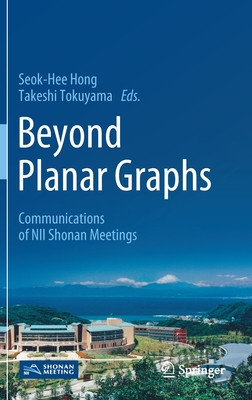Complex Networks: An Algorithmic Perspective (Hardcover)
暫譯: 複雜網絡:算法視角 (精裝版)
Kayhan Erciyes
- 出版商: CRC
- 出版日期: 2014-09-16
- 售價: $7,350
- 貴賓價: 9.5 折 $6,983
- 語言: 英文
- 頁數: 320
- 裝訂: Hardcover
- ISBN: 1466571667
- ISBN-13: 9781466571662
-
相關分類:
Algorithms-data-structures
海外代購書籍(需單獨結帳)
相關主題
商品描述
Network science is a rapidly emerging field of study that encompasses mathematics, computer science, physics, and engineering. A key issue in the study of complex networks is to understand the collective behavior of the various elements of these networks.
Although the results from graph theory have proven to be powerful in investigating the structures of complex networks, few books focus on the algorithmic aspects of complex network analysis. Filling this need, Complex Networks: An Algorithmic Perspective supplies the basic theoretical algorithmic and graph theoretic knowledge needed by every researcher and student of complex networks.
This book is about specifying, classifying, designing, and implementing mostly sequential and also parallel and distributed algorithms that can be used to analyze the static properties of complex networks. Providing a focused scope which consists of graph theory and algorithms for complex networks, the book identifies and describes a repertoire of algorithms that may be useful for any complex network.
- Provides the basic background in terms of graph theory
- Supplies a survey of the key algorithms for the analysis of complex networks
- Presents case studies of complex networks that illustrate the implementation of algorithms in real-world networks, including protein interaction networks, social networks, and computer networks
Requiring only a basic discrete mathematics and algorithms background, the book supplies guidance that is accessible to beginning researchers and students with little background in complex networks. To help beginners in the field, most of the algorithms are provided in ready-to-be-executed form.
While not a primary textbook, the author has included pedagogical features such as learning objectives, end-of-chapter summaries, and review questions
商品描述(中文翻譯)
網路科學是一個快速崛起的研究領域,涵蓋數學、計算機科學、物理學和工程學。研究複雜網路的一個關鍵問題是理解這些網路中各個元素的集體行為。
儘管圖論的結果在研究複雜網路的結構方面已被證明是強大的,但專注於複雜網路分析的演算法方面的書籍卻不多。為了填補這一需求,《Complex Networks: An Algorithmic Perspective》提供了每位複雜網路研究者和學生所需的基本理論演算法和圖論知識。
本書主要關於指定、分類、設計和實現大多數序列以及並行和分散的演算法,這些演算法可用於分析複雜網路的靜態特性。該書提供了一個專注於圖論和複雜網路演算法的範疇,識別並描述了一套可能對任何複雜網路有用的演算法。
- 提供圖論的基本背景
- 提供複雜網路分析的關鍵演算法調查
- 提出複雜網路的案例研究,說明演算法在實際網路中的實施,包括蛋白質互動網路、社交網路和計算機網路
本書僅需具備基本的離散數學和演算法背景,提供的指導對於對複雜網路了解不多的初學研究者和學生來說是可及的。為了幫助該領域的初學者,大多數演算法以可執行的形式提供。
雖然不是主要的教科書,作者仍然包含了教學特徵,如學習目標、章末摘要和複習問題。
































